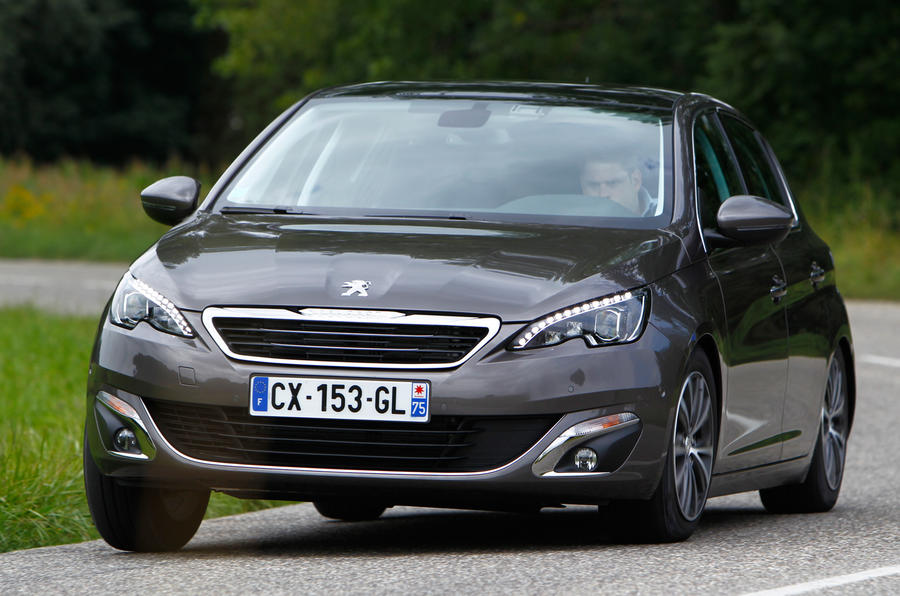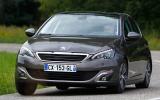What is it?
The Peugeot 308 is tremendously important. It may not have a new name, but it represents a colossal investment on Peugeot’s part, and is intended to put the company back on the podium in the C-segment – the market which still claims a third of all sales in Europe. Much of what follows – the new modular platform, a tangible elevation in quality, a barrage of fresh tech – is intended to reassert the manufacturer’s position after a decade in the family hatch doldrums. In the ’90s, Peugeot made hay with the deftly turned 306, which sold almost 450,000 examples in the UK. The previous 308, launched in 2007, barely managed to limp over the 120,000 mark. PSA’s internal restructuring specifically remakes the brand as a Volkswagen competitor, and such numbers will simply not do. Consequently, the Volkswagen Golf has been appraised, gauged and digested, and the all-new 308 formulated to overhaul its head start. The EMP2 platform ought to be key. It’s what the flawed 208 didn’t get, and its improved assembly and wider use of aluminium and composites is the main reason why Peugeot can claim a 140kg reduction in kerb weight over the previous model. It is also the reason why the wheels of the new 308 can be pushed further into the corners of the car’s real estate. The overhangs have shrunk, and a 2.62m wheelbase is now squeezed into a 4.25m-long body, making it one of the most compact cars in the class. It’s also slightly lower and wider than it’s predecessor – with a commensurately lower centre of gravity – and, thanks again to the underfloor platform design, is now far better optimised for aerodynamically. Inside Peugeot has introduced what it calls (preload cringe) i-Cockpit. There are different aspects to this, but, as the name would suggest, the centrepiece is a 9.7-inch touchscreen which significantly reduces the amount of knobs and dials required on the dashboard. In response to specific criticism about the previous 308, storage has been increased, with 435 litres on offer before you lift the boot floor to access 35 litres more. You'd understandably expect funky new powerplants to feature under the bonnet, but for now the 308 makes do with the previous-gen Euro5 compliant engines, with the 1.2-litre VTi and 1.6-litre THP covering the petrol side, and two variants of the 1.6-litre HDi making up the diesels (the more powerful 115bhp version, still capable of 74.3mpg and 98g/km of CO2, is tested here). But early next year the turbocharged version of the e-THP three-pot, as well as the new 1.6 and 2.0-litre BlueHDi (offering a cutting-edge 82g/km and 91mpg) will make their debuts.

















Join the debate
Add your comment
Redundant CD Player
CD is far better quality than any mp3. CD runs at 1400kbps and mp3 only runs at 128 kbps. Compressed music has so many parts removed particularly at the top and bottom end so try listening to an mp3 track then a CD on the same system in your car and hear the difference.
Major Fatty wrote:CD is far
MP3 doesnt have to run at such a low rate, but i agree, it usually does, and it sounds awful in comparison. I agree the CD is along way from redundant and its good to see they have included one (unlike the 208 where its a very expensive option unless you buy the cheapest version).
But to be fair to car makers, most people equate sound quality to how big a thump they can get from the bass
"Diesel lump's clatter"
Oh! Really? Passengers tend to think the same engine installed in another car is a petrol unit until they are disabused. Methinks I spot an anti-diesel reactionary at work.
It's a very odd review anyway. Readers should just move on.
Attractive but
The minimalist interior looks very attractive but like some others I do find the touchscreens fiddly to use while driving.